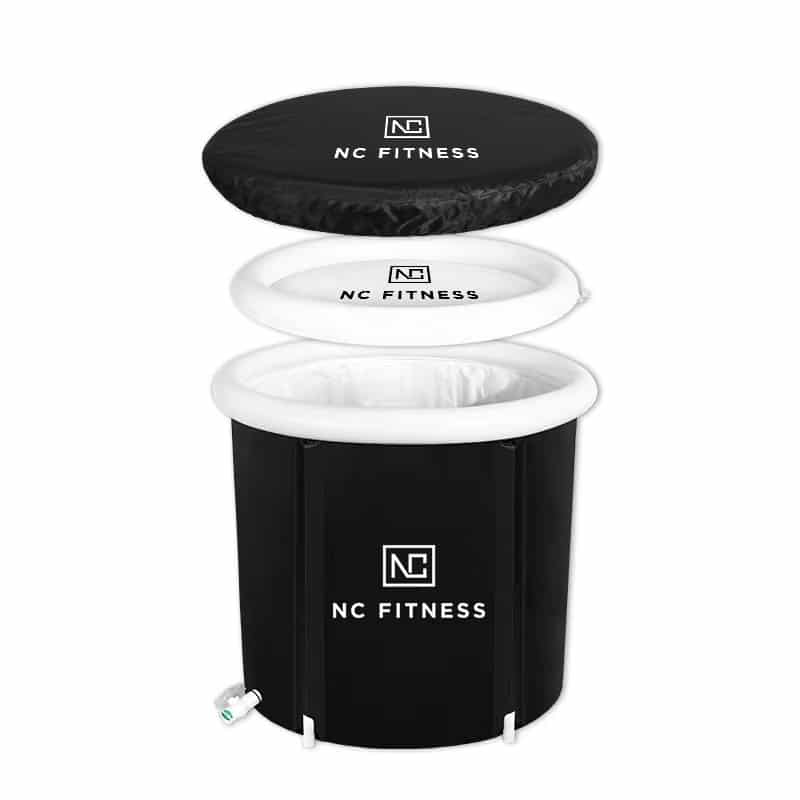Making Cryotherapy a Part of Your Routine
Cold therapy used to sit on the sidelines of fitness & performance recovery, but now it plays a major role in wellness. Pro athletes and busy people looking to handle stress better have both adopted these practices. Research on cryotherapy and cold water dips shows they do much more than just help your muscles recover. At NC Fitness Gear, we are dedicated to offering recovery tools that make a difference, which led us to design our high-quality Ice Bath. It provides an easy and practical way to make cold therapy part of your routine.
Why Cold Plunging Is More Than a Passing Craze
Cold water immersion triggers helpful responses in the body. When you get into cold water, your body activates protective actions. Blood vessels tighten to keep your core warm while sending blood to essential organs. This constriction acts like a built-in anti-inflammatory system, easing swelling in tired muscles and joints. Once you start warming up again, the blood vessels expand and bring fresh oxygen-filled blood back to your arms and legs. This process washes out waste products from your body.
Research from the Mayo Clinic shows this method lowers delayed onset muscle soreness also known as DOMS (check out our recent post on DOMS here). This helps you train more often with less pain. The advantages go past just helping the body recover. Cold exposure causes norepinephrine to be released. This chemical improves focus and makes you more alert. It also boosts endorphins, which lift mood. This might explain why people who take cold plunges often say they feel sharper and handle emotions better, as well as seeing quicker physical recovery.

When Cold Therapy Works the Most
People are still discussing the best time to try cold exposure for researchers and recovery. Most suggest dipping into cold water right after workouts if you train hard or lift weights. Using cold right after can help alleviate swelling and muscle damage, as these issues tend to be most severe after exercising. Top sportspeople often rely on this method to recover quicker between tough training sessions or competitions.
New ideas suggest potential benefits of cooling the body before workouts. Some athletes in endurance sports try cold plunges before exercising. They use it to build mental strength and handle pain better. The adrenaline boost from cold exposure may energise you the way caffeine can, but without the shaky feeling or risk of getting dehydrated. Pelotonstates that the best choice for timing depends on your priorities, like boosting recovery or improving performance. Testing what fits your body and training style could help figure it out.
Boosting Cold Therapy with Breathing and Focus
It’s challenging to discuss modern cold therapy without mentioning the pioneering work of Wim Hof. His technique offers a comprehensive approach that blends cold exposure with unique breathing methods and mental focus practices. The Wim Hof Method has earned respect in science thanks to studies showing it can affect the autonomic nervous system in ways once believed impossible to regulate. The autonomic nervous is responsible for processes you don’t consciously think about, such as heart rate, digestion, breathing, blood pressure, and temperature regulation.
This method’s strength comes from how its parts work together. Breathing techniques boost oxygen levels and shift blood pH levels, which helps the body handle the cold better and gain more from it. At the same time, mental focus helps people stay calm and in control even in tough moments, improving how they deal with stress in everyday life. Many people who practice it say it not only helps with recovery and immunity but also brings more creativity, emotional stability, and vitality. While learning and progressing step by step is necessary, this approach offers one of the best ways to use the advantages of cold therapy.
How to Use Cold Therapy
Cold plunging offers numerous benefits, but it’s essential to approach it with the proper precautions. The Cleveland Clinic explains that cold water immersion places significant stress on the heart, causing the heart rate and blood pressure to rise immediately. Anyone with a past heart condition, high blood pressure, or circulation problems should talk to their doctor before trying cold therapy. People with Raynaud’s phenomenon, cold sensitivity, or respiratory problems as well as pregnant women, need to be extra careful if they want to take the plunge.
To build tolerance, beginners should start slowly and steadily. Begin with cool showers and lower the temperature just a little bit at a time. This helps your nervous system adjust without too much stress. When trying full immersion, start small. Stay in water around 15°C for about 30 to 60 seconds at first. Over time, as your body adapts, you can handle colder water and stay in longer. Make sure someone stays close when you try cold plunges. The effects on your blood vessels might leave you feeling a little dizzy when you get out.
Bring Pro-Level Cold Therapy Home with NC Fitness Gear
Adding cold therapy to everyday life feels simple with our designed Ice Bath. Built to combine ease of use and performance, it removes the trouble of setting up standard ice baths while still offering the recovery perks desired by athletes and wellness fans. Its strong build provides lasting durability, and the smart design makes it easy to fill, maintain, and use the cold plunge.
Our Ice Bath stands out because it works well in different ways. You can use it after workouts to recover, in the morning to feel energised, or at night to unwind. Cryotherapy chambers cost more and need special setups, but our Ice Bath makes high-quality cold therapy easy to access at home or in a training space. Whether you’re a professional athlete trying to recover faster or just someone wanting to handle stress better and feel healthier, this tool opens the door to cold therapy for everyone.
Using Cold Therapy
The path to cold therapy often starts with goals tied to healing the body, but it grows into something deeper. People who stick with it often share that they don’t just feel stronger, they also notice sharper focus, steadier emotions, and more energy. It helps people learn how to handle discomfort and become more aware of the connection between the mind and body, which applies to every part of life.
Like any effective wellness habit, it works best when done with care. Easing in, paying attention to your own limits, and practising the right techniques can help you get the most benefits while staying safe. You can use cold plunging on its own, or mix it with things like compression therapy or infrared saunas. Either way, it’s a helpful tool to boost any wellness plan. In our next post, we’re going to focus on the research around incorporating both cold plunging and sauna into your routine.

Are you thinking about starting a cold therapy routine? Check out our Ice Bath now and see how this easy-to-use tool can change how you recover and feel overall.
Note: This article shares educational information and is not medical advice. Please consult your primary healthcare provider before trying new wellness practices.